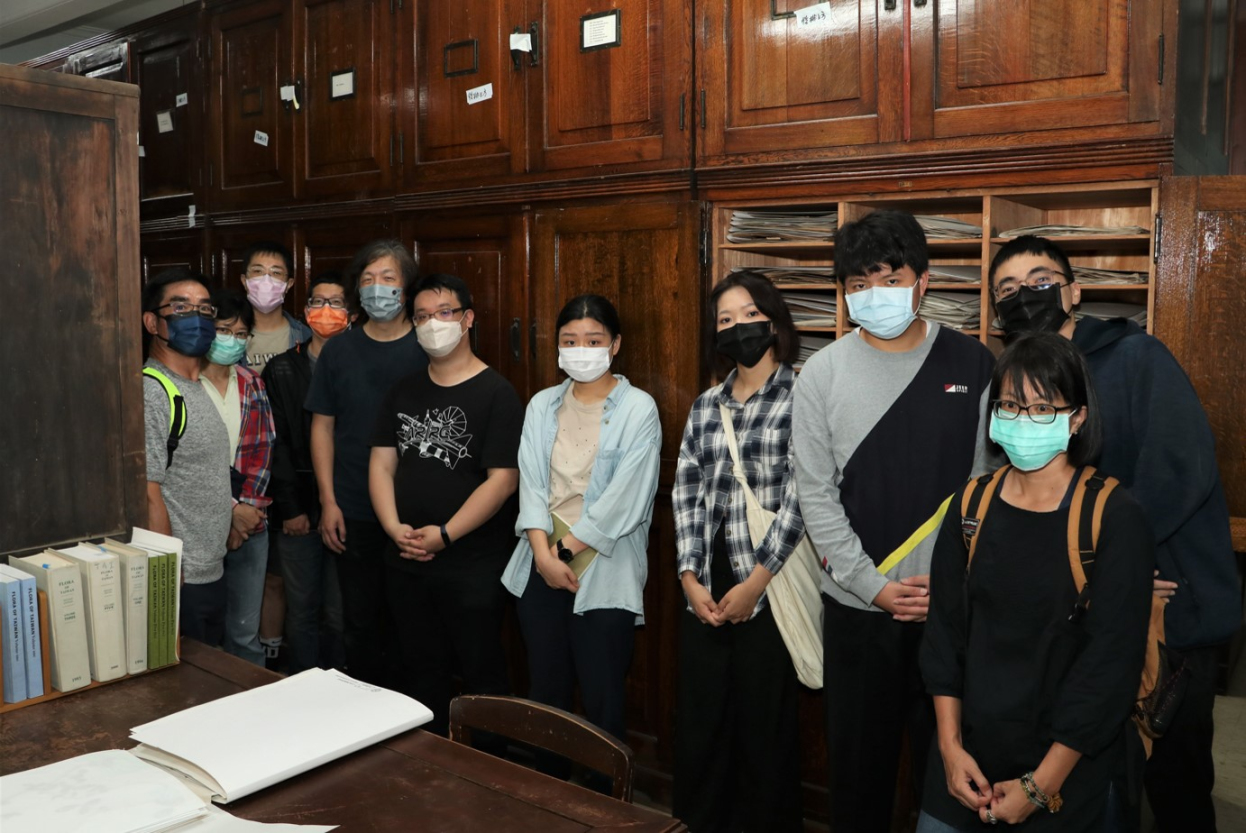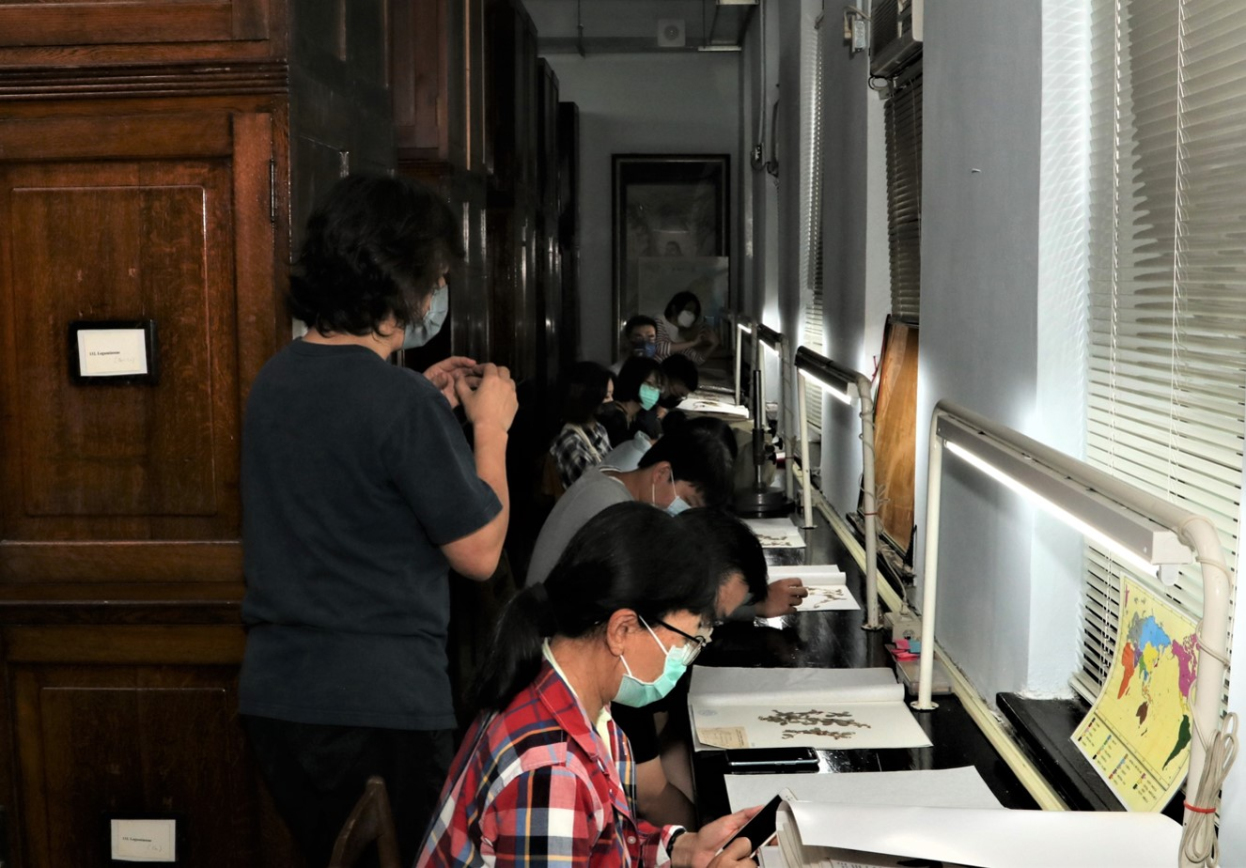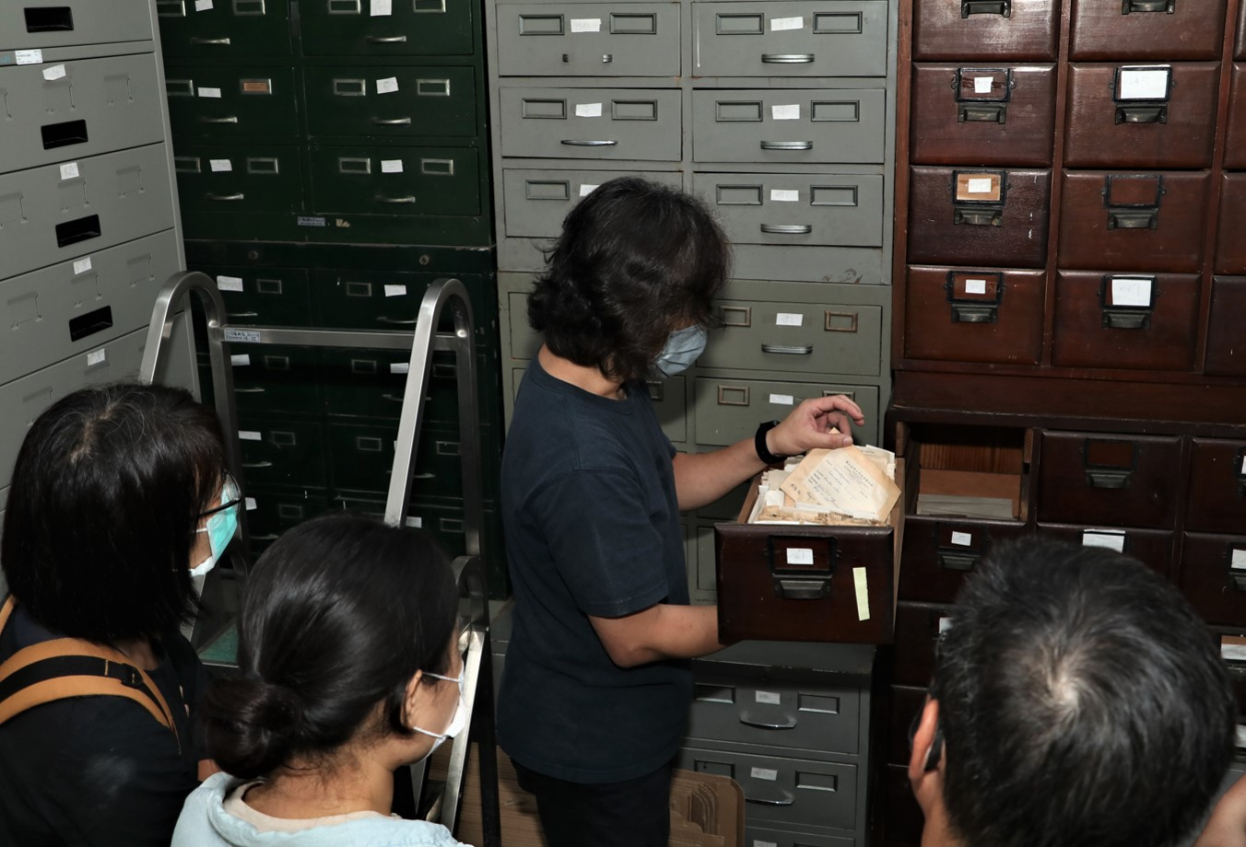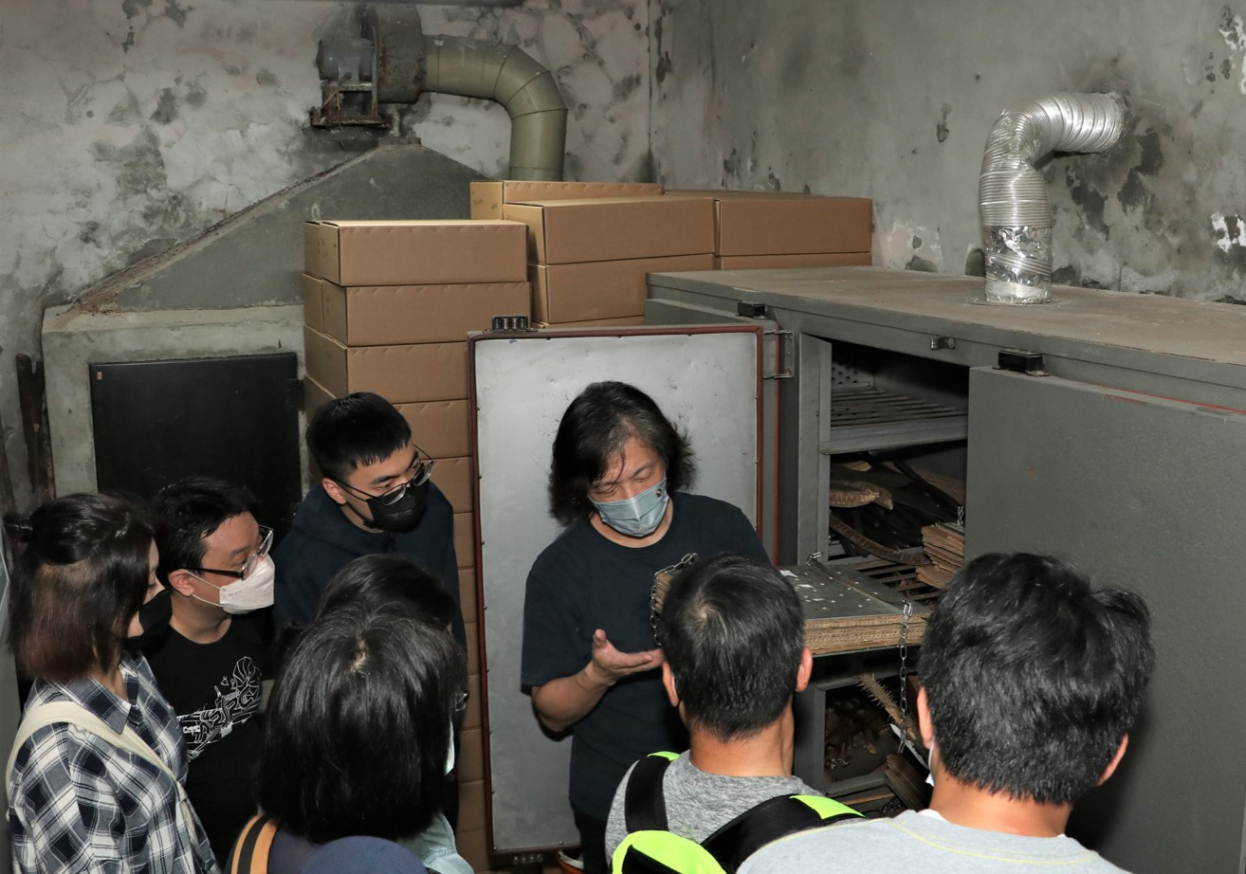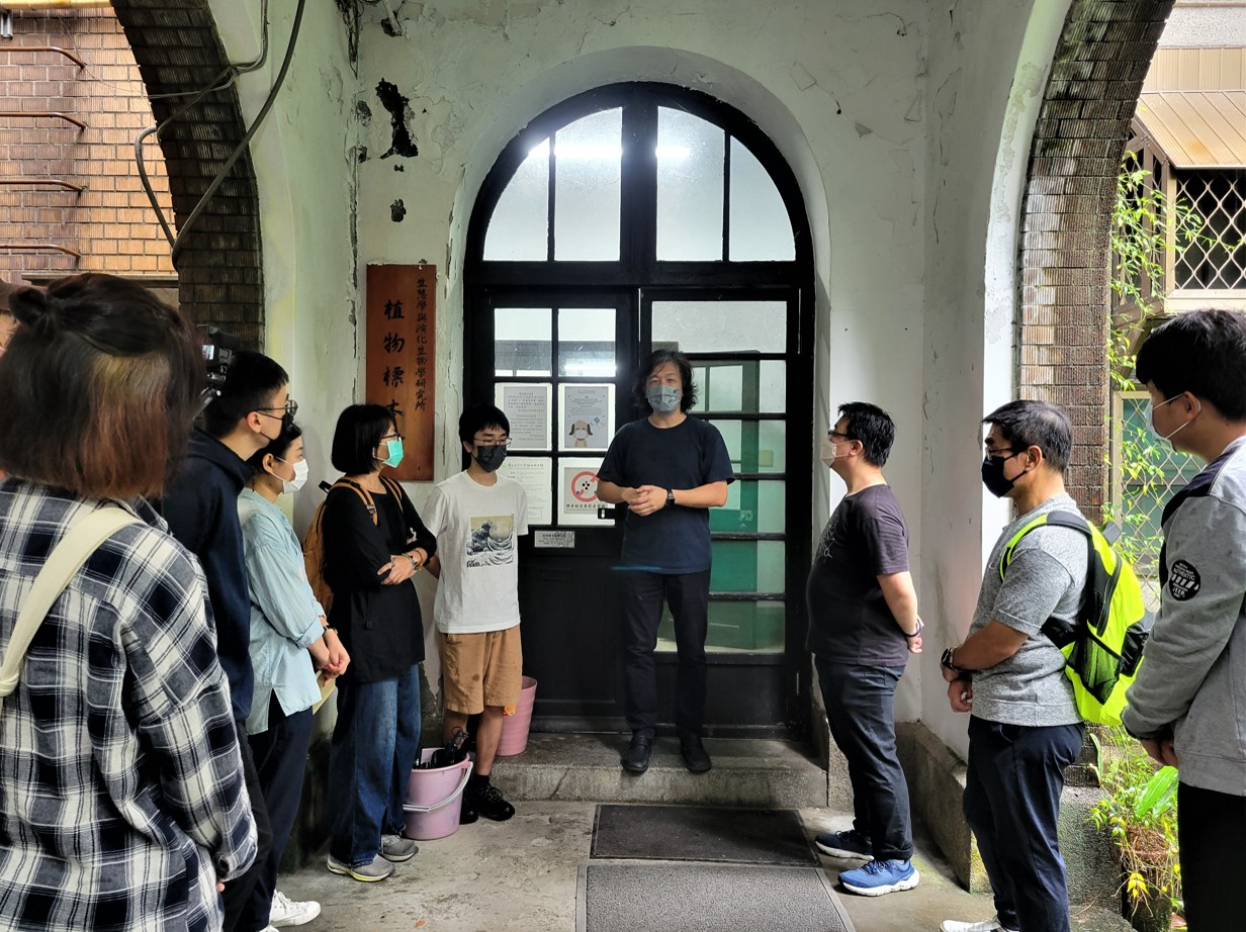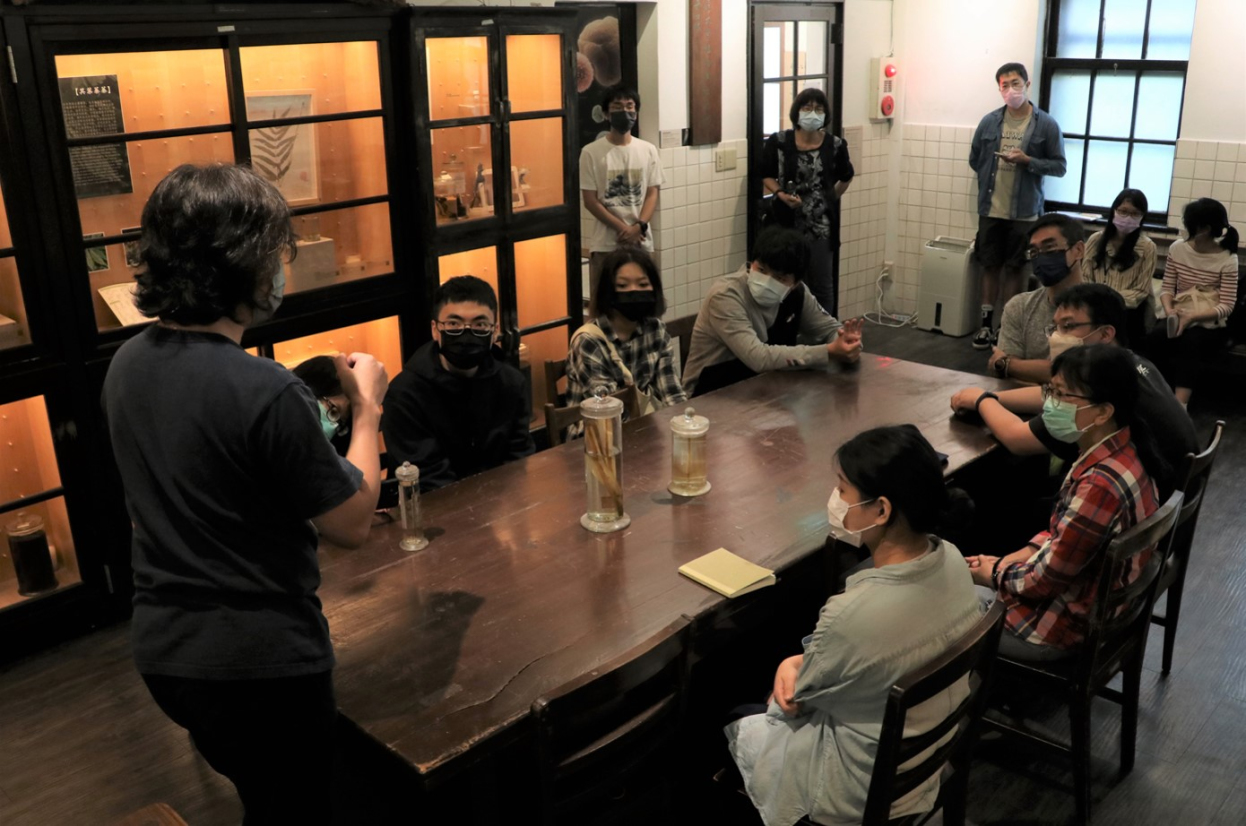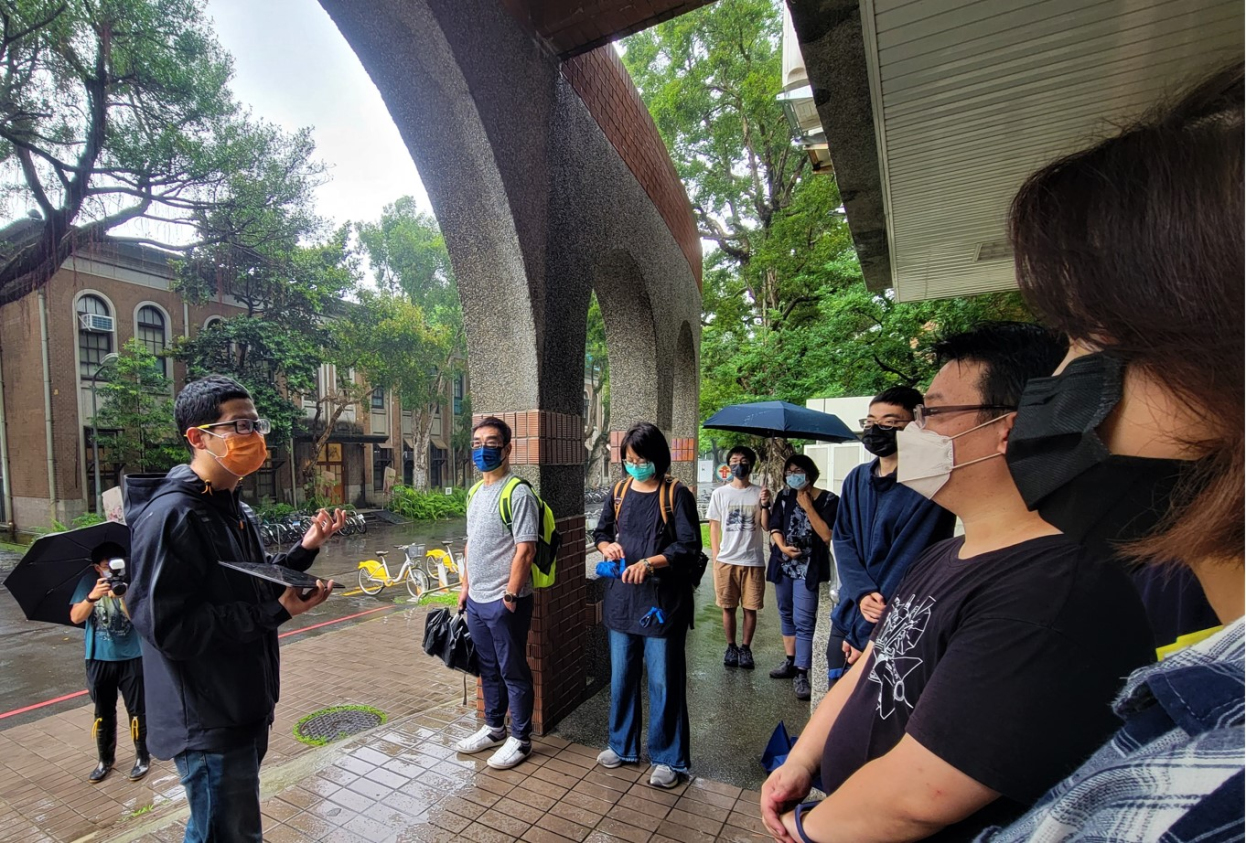Date & Time
2022/05/11 10:00-11:30
Venue
TAI Herbarium
Introduction
In response to the International Museum Day in 2022 and in conjunction with the "Revisiting the Site of Early Natural History Research in Taiwan: The Selection Project of University Museum Collections Before 1945", the TAIDA Museum Provisional Office planned two training sessions with visit tours for museum talent cultivation. In this session, we invited the curator of TAI Herbarium, Jer-Ming Hu, and the program manager of NTU museums, Hsin-Yu Wu, to lead the participants to visit the university museum and get to know its architecture, greenhouse, oven room, collection room, and exhibition room. Participants include workers in education and publishing, students from diverse areas, including botany, medical science, and arts, and also alumni.
The lecturers of the event synthesized materials, such as historical documents, graphics, specimens, and archive equipment to demonstrate to the participants: TAI herbarium was Founded in 1929, for storing voucher specimens collected by scientists. It is located on the east side rear of Taihoku Imperial University’s biology classroom (now the Building 1). The front door faced a botanical garden on the west (now the Fu garden), with a cloister leading to the biology classroom. The ancillary greenhouse aside was completed in 1931. The first curator Kudo Yushun graduated from Tokyo Imperial University (now the Tokyo University) and was teaching at Hokkaido Imperial University (now the Hokkaido University). The design of the collection cabinets for TAI was similar to the above two universities mentioned. For better fumigation outcomes, the bottom of the cabinets was elevated with wood frames. The small opening was used to deposit camphor or mothball for fumigation. Just like other major herbarium around the world, TAI has placed collection cabinets along with a long table beside the window. There are lamps, pencils, erasers, blank labels, and tweezers on the table for the scholars to use. If different opinions occur in the identification of a specimen, the opinion on its identity, name, and date could be tagged with a new label. The specimens will keep the old and new labels for good. The 280,000 pieces of the specimen were arranged by Engler System originally, now TAI is gradually transferred to the APG System which most major herbaria around the world use. 【For the detailed event record, please refer to the FB fan page.】
